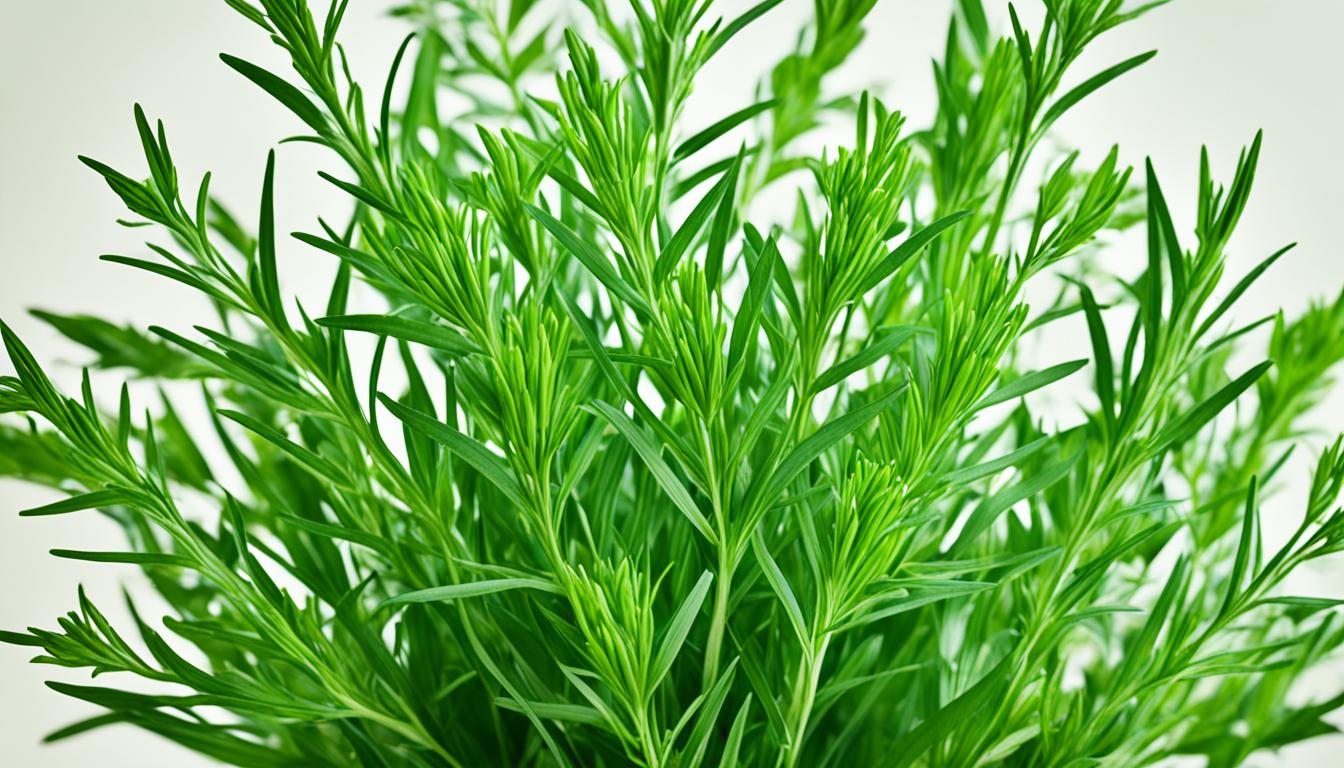I love exploring the world of herbs and how they can change simple dishes. Tarragon is one herb that really stands out. It has a unique taste like anise or licorice that makes food taste special. This herb is a key part of French cooking, along with chervil, parsley, and chives.
There are three kinds of tarragon: French, Russian, and Mexican. French tarragon is the best for cooking because it tastes mild and aromatic. It goes well with many foods.
I want to share my love for tarragon with you. It’s great for making salad dressings, sauces for chicken, or adding elegance to eggs. Tarragon can really make your cooking better. Let’s explore this amazing herb together!
What is Tarragon?
Tarragon is a tasty herb that belongs to the Artemisia genus. This group also includes other greens like those used in French absinthe. The French type of tarragon is most common in cooking. It’s known for its mild licorice taste and is part of the French fines herbes mix.
Exploring the Different Varieties of Tarragon
French tarragon is the top choice, but there are others to try. Spanish or Mexican tarragon tastes like French tarragon but is richer. Russian tarragon has a strong, bitter flavor and is great for drinks.
- French tarragon: Subtle licorice flavor, part of the fines herbes blend
- Spanish (Mexican) tarragon: Similar to French but slightly richer in flavor
- Russian tarragon: Stronger, more bitter taste, often used in beverages
All tarragon types are known for their unique stems and leaves. The stems are tough and woody, and the leaves are long and pointed.
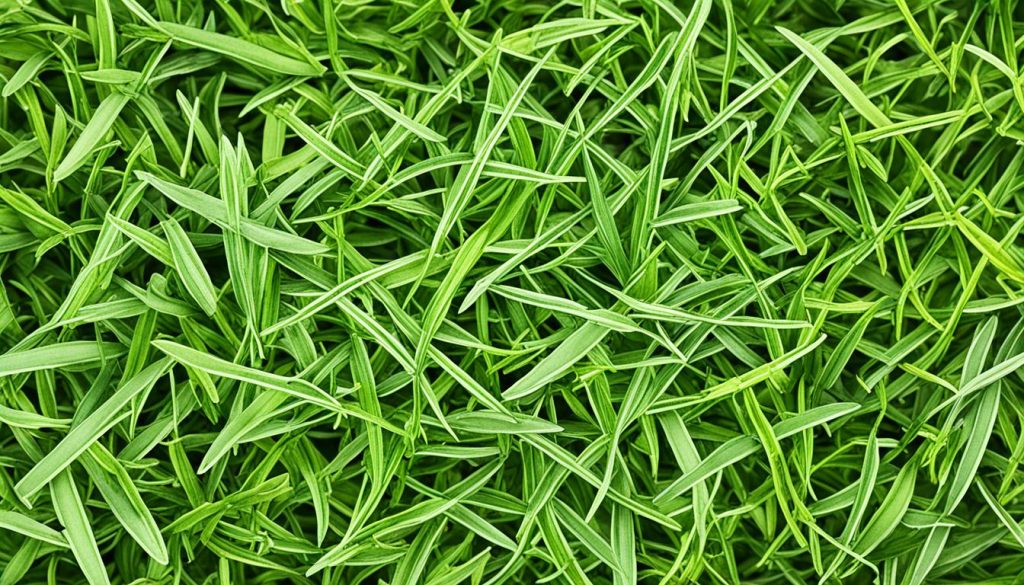
The Distinctive Flavor of Tarragon
Tarragon is a beloved herb known for its unique flavor. It’s not just about a simple licorice or anise taste. This herb has a mix of flavors like mint, vanilla, pepper, and a hint of eucalyptus. These flavors come together to make a taste that’s both delicate and sophisticated.
Some might think tarragon tastes like licorice at first. But the French tarragon is actually quite mild. It has a sweet and slightly bitter taste. This mix makes it great for both savory and sweet dishes.
Tarragon is a versatile herb that can add a complex and delicate flavor to any dish. Its unique blend of licorice, mint, and other subtle notes makes it a true delight for the palate.”
Tarragon’s complex flavor makes it a key ingredient in cooking. Chefs and home cooks love how it can improve many dishes. Whether fresh, dried, or as an essential oil, tarragon can turn a simple dish into something special.
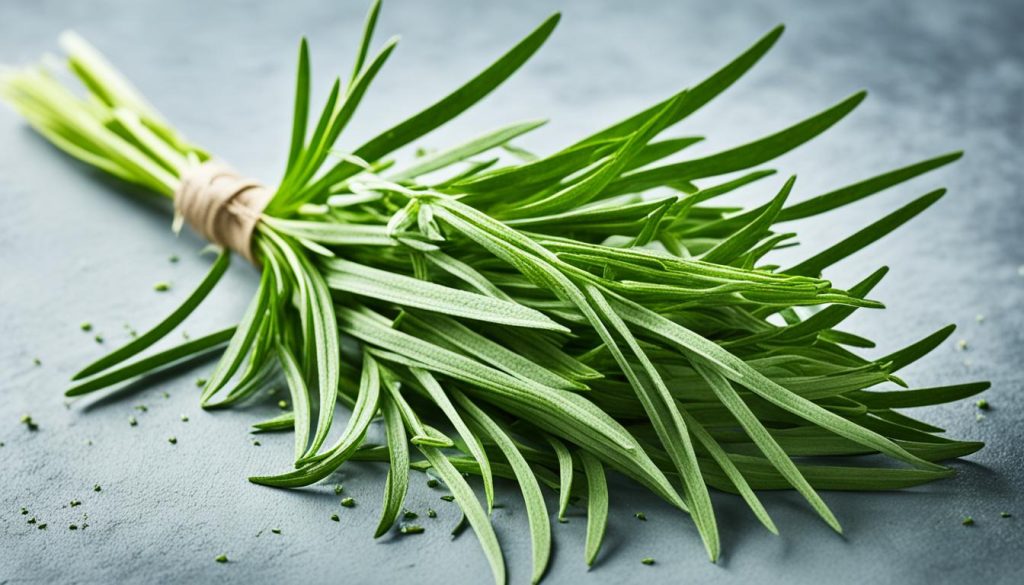
Where to Find Fresh Tarragon
Finding fresh tarragon can sometimes be hard, but it’s easier than you think. It’s not always in small stores, but big supermarkets have it in the spring and summer. For the best quality, go to your local farmers market. That’s where you’ll find the freshest, most fragrant tarragon.
Growing Tarragon at Home: Tips for a Thriving Herb Garden
Why not grow your own tarragon? It’s easy to grow, in pots or in the ground, and comes back every year in zones 4 and warmer. You can find tarragon seedlings at local nurseries or online. Make sure it gets lots of sunlight and water to stay healthy.
With a little care, you can pick fresh, tasty tarragon from your own garden. It’s great for any home cook.
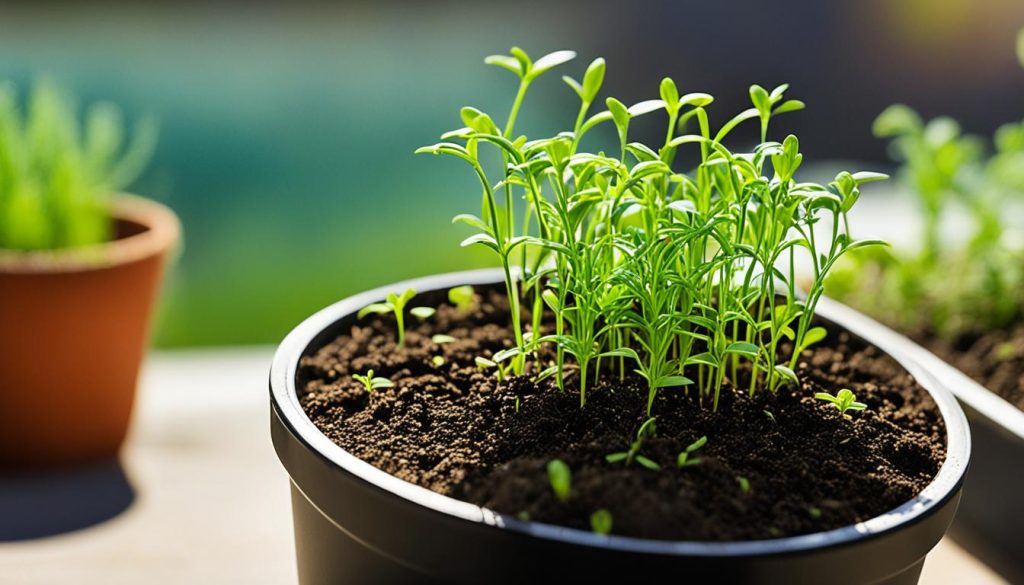
Tarragon is a versatile herb that can elevate a wide range of dishes, from savory to sweet. Whether you’re finding it at the grocery store or growing it at home, this herb is a must-have for any home cook.”
How to Use Fresh Tarragon in Cooking
Cooking with fresh tarragon is fun and can make many dishes taste better. This herb is aromatic and can make food special. When using fresh tarragon, be gentle with the leaves because they can easily get bruised.
It’s important to add fresh tarragon near the end of cooking. This keeps its flavor bright and avoids it getting too strong. Tarragon goes well with light foods like chicken, fish, eggs, and creamy sauces. Its taste is like anise and can make these foods taste great.
Using tarragon leaves in your cooking adds depth and complexity. Add them to salad dressings, marinades, soups, or as a garnish for meats or veggies. Start with a little tarragon in recipes and adjust to taste.
Adding tarragon to dishes opens up new flavors. Try it out to make meals that will wow your family and friends.
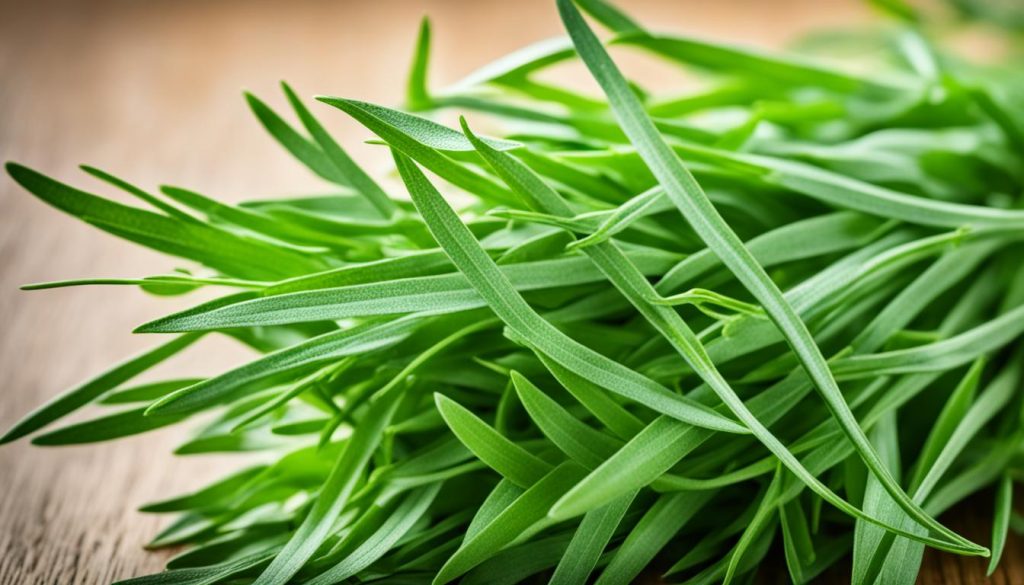
Foods That Pair Well with Tarragon
Tarragon has a unique taste like anise. It goes well with many foods. It can make your dishes taste better. Let’s look at some classic food pairings that highlight tarragon’s flavor.
Tarragon in French Cuisine
Tarragon is key in French cooking. It fits well with many French dishes. You can find it in roasted chicken with a creamy sauce and the famous Béarnaise sauce.
| Dish | Tarragon Pairing |
|---|---|
| Roasted Chicken | Creamy Tarragon and Mustard Sauce |
| Grilled Steak | Béarnaise Sauce |
| Asparagus | Béarnaise Sauce |
Tarragon is great with mild proteins like chicken, fish, and eggs. It’s used in sauces, salad dressings, and pasta. Tarragon is a versatile herb for many dishes.
“Tarragon’s distinct anise-like flavor can elevate even the simplest of dishes, adding a touch of elegance and sophistication.”
Storing Fresh Tarragon for Maximum Freshness
Keeping your fresh tarragon vibrant and flavorful is key to making your cooking better. Whether you’re a pro chef or a home cook, learning how to store tarragon right is crucial. Let’s look at the best ways to keep this aromatic herb fresh for a long time.
Refrigerator Storage
The fridge is your go-to for keeping tarragon fresh. Just wrap the stems in a damp paper towel and put them in a plastic bag or airtight container. This method can keep your tarragon fresh for up to two weeks, giving you a steady supply for your recipes.
Freezing Tarragon
Freezing tarragon is great for long-term storage. Take the leaves off the stems, spread them on a baking sheet, and freeze until they’re solid. Then, move them to an airtight container or plastic bag and freeze for up to five months. Frozen tarragon keeps its flavor and can be used like fresh tarragon in your dishes.
Drying Tarragon
If you have a lot of tarragon and want to keep it for longer, drying is the best choice. Remove the leaves from the stems and put them in an airtight container in a cool, dark spot. Dried tarragon can last up to a year, making it handy for your pantry.
“Proper storage is the key to keeping tarragon fresh and flavorful. With a few simple techniques, you can enjoy the aromatic delight of this herb year-round.
By using these storage tips, you’ll be able to keep your tarragon fresh and ready for all your recipes. Whether you’re storing fresh tarragon or keeping tarragon fresh, these tarragon storage tips will help your herb stay vibrant and full of flavor.
Preserving Tarragon for Year-Round Use
If you love the unique taste of fresh tarragon, you might find yourself with too much after harvest. Don’t worry, I’ve got ways to keep that flavor all year. Here are easy methods to preserve tarragon for later use.
Dried Delight: Preserving Tarragon Leaves
Drying tarragon leaves is a simple way to keep them. Cut the stems, take off the leaves, and dry them in a cool, dark spot. Or, use a dehydrator to dry them out. Once dry, put them in an airtight container for later use.
Frozen Freshness: Preserving Tarragon in the Freezer
Freezing is great for keeping tarragon fresh. Take the leaves off the stems and lay them on a baking sheet. Freeze them until they’re solid, then move them to a freezer bag or container. This keeps the flavor and nutrients, so you can enjoy summer tarragon in winter.
Tarragon Vinegar: A Flavorful Preservation Hack
Make your own tarragon vinegar for a unique flavor. Put fresh tarragon in white wine or apple cider vinegar and let it sit for a few weeks. This vinegar is great for dressings, marinades, or as a topping for veggies or meat.
“Preserving the fresh, fragrant essence of tarragon is a game-changer in the kitchen. With a few simple techniques, you can enjoy this beloved herb year-round.”
There are many ways to keep tarragon fresh, like drying, freezing, or making vinegar. So, enjoy your herb garden and keep tarragon’s flavor all year.
Tarragon
Tarragon is a special herb from the Artemisia genus. It’s known for its unique licorice-like taste. This herb comes in different types, each with its own special uses in cooking.
French tarragon is the most common type. It has a light, slightly sweet flavor. Russian tarragon is stronger and more bitter. Mexican tarragon doesn’t really belong to the tarragon family but tastes similar.
Tarragon is not just about taste. It can make many dishes better, like eggs, chicken, sauces, and salad dressings. It adds a special touch that makes food more elegant.
“Tarragon is the unsung hero of the herb world. Its subtle, licorice-like flavor can transform a simple dish into a culinary masterpiece.”
The Diverse Uses of Tarragon
- Enhance the flavor of eggs and omelets
- Infuse chicken and seafood dishes with a distinctive taste
- Add depth to sauces, vinaigrettes, and marinades
- Elevate the taste of roasted vegetables and potatoes
- Pair wonderfully with fruits, such as in fruit salads or baked goods
Tarragon has a long history and many uses in cooking. It’s a favorite culinary herb in kitchens everywhere. No matter the type, tarragon brings a special flavor that makes dishes better.
Health Benefits of Tarragon
Tarragon is not just for cooking. It’s also good for your health. It’s full of antioxidants and omega-3 fatty acids. These can protect your heart and prevent diseases.
This herb also helps control blood sugar and keeps your digestive system healthy.
Potential Medicinal Properties of Tarragon
Studies show tarragon might fight bacteria and ease toothaches with its eugenol. More research is needed, but it looks promising. I’m excited to learn more about its health benefits.
Tarragon is full of antioxidants and might fight bacteria. I want to use it more in my cooking. It tastes great and could help keep me healthy.

